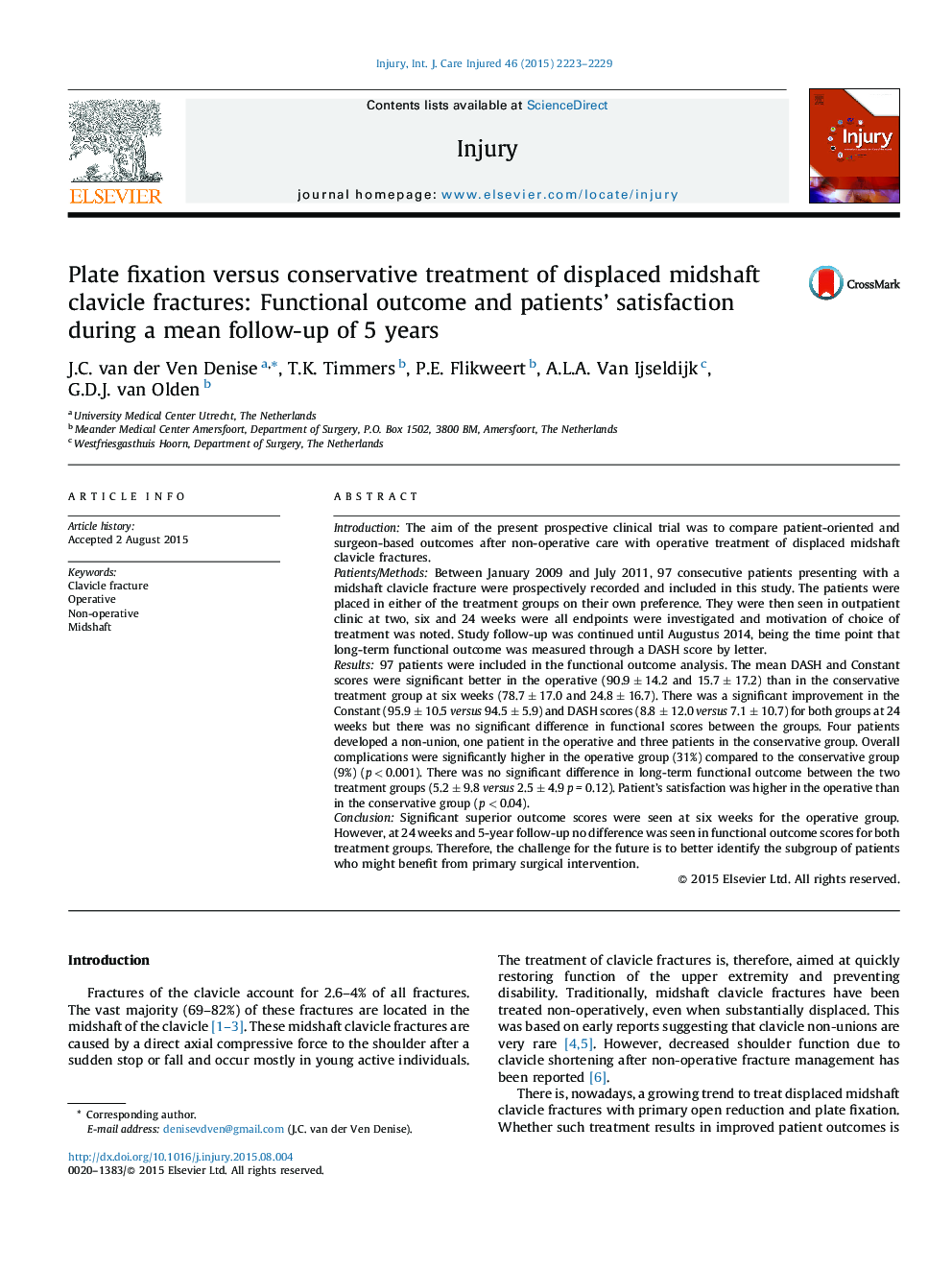| Article ID | Journal | Published Year | Pages | File Type |
|---|---|---|---|---|
| 3239219 | Injury | 2015 | 7 Pages |
IntroductionThe aim of the present prospective clinical trial was to compare patient-oriented and surgeon-based outcomes after non-operative care with operative treatment of displaced midshaft clavicle fractures.Patients/MethodsBetween January 2009 and July 2011, 97 consecutive patients presenting with a midshaft clavicle fracture were prospectively recorded and included in this study. The patients were placed in either of the treatment groups on their own preference. They were then seen in outpatient clinic at two, six and 24 weeks were all endpoints were investigated and motivation of choice of treatment was noted. Study follow-up was continued until Augustus 2014, being the time point that long-term functional outcome was measured through a DASH score by letter.Results97 patients were included in the functional outcome analysis. The mean DASH and Constant scores were significant better in the operative (90.9 ± 14.2 and 15.7 ± 17.2) than in the conservative treatment group at six weeks (78.7 ± 17.0 and 24.8 ± 16.7). There was a significant improvement in the Constant (95.9 ± 10.5 versus 94.5 ± 5.9) and DASH scores (8.8 ± 12.0 versus 7.1 ± 10.7) for both groups at 24 weeks but there was no significant difference in functional scores between the groups. Four patients developed a non-union, one patient in the operative and three patients in the conservative group. Overall complications were significantly higher in the operative group (31%) compared to the conservative group (9%) (p < 0.001). There was no significant difference in long-term functional outcome between the two treatment groups (5.2 ± 9.8 versus 2.5 ± 4.9 p = 0.12). Patient's satisfaction was higher in the operative than in the conservative group (p < 0.04).ConclusionSignificant superior outcome scores were seen at six weeks for the operative group. However, at 24 weeks and 5-year follow-up no difference was seen in functional outcome scores for both treatment groups. Therefore, the challenge for the future is to better identify the subgroup of patients who might benefit from primary surgical intervention.
